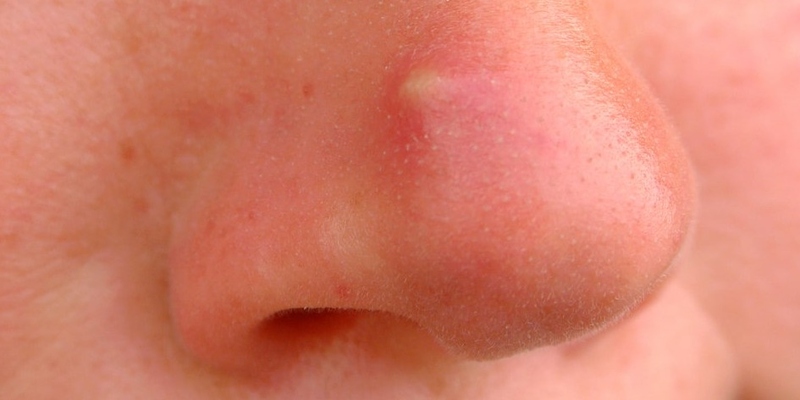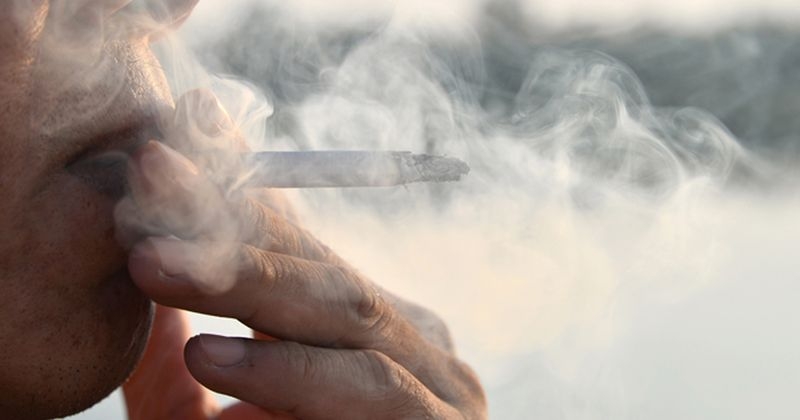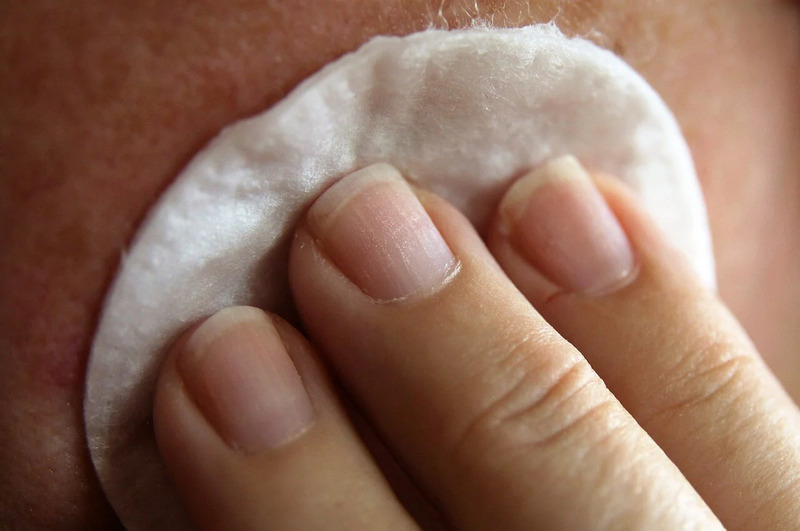Understanding the Challenges of Nasal Pimples
Dec 17, 2023 By Nancy Miller
Exploring the causes, effective treatments, and preventive measures to maintain a clear and healthy nasal appearance. This article delves into the intricacies of nasal pimples. The emergence of a pimple inside the nose proves not only uncomfortable but also perplexing. It's unique among our common skin blemishes due to its challenge posed by sensitivity and intricate nature. Indeed, it presents an entirely different set of difficulties.

Causes of Nasal Pimples
Various factors contribute to nasal pimples, also known as inside-nose acne or nostril pimples. To effectively address the issue, it is crucial to understand these triggers.
- Poor Hygiene
To prevent the accumulation of dirt, bacteria, and excess oil inside the nose, you must maintain proper nasal hygiene. Blocked pores and pimple development can result from poor hygiene.
- Folliculitis
Folliculitis, the inflammation of hair follicles, may manifest inside the nose. Bacterial or fungal infections typically provoke this condition and consequently produce painful pimples.
- Ingrown Hairs
When hair within the nostrils curls back or grows sideways into the skin, it commonly causes ingrown hairs and subsequently leads to inflammation and pimple formation.
- Environmental Allergens
Allergens like pollen, dust mites, or pet dander trigger allergic reactions within the nasal cavity upon exposure. The sensitive individuals may develop nasal pimples due to allergic inflammation.
- Hormonal Changes
Particularly during puberty, menstruation, or pregnancy hormonal levels fluctuate. These fluctuations can influence the skin's oil production. Increased sebum production potentially contributes to the formation of intranasal pimples.
- Smoking or Exposure to Smoke
Cigarette smoke and environmental pollutants, by irritating the delicate nasal skin, can induce inflammation. This could potentially precipitate nasal pimples. For optimal nasal health, you must avoid exposure to smoke crucially.

- Stress and Anxiety
Stress and anxiety, as psychological factors, can undermine the body's immune response. They may also play a role in precipitating skin issues, even culprits like nasal pimples. One potential method to stave off outbreaks involves managing stress through relaxation techniques.
Recognizing the Symptoms
For prompt and effective treatment, identifying the symptoms of nasal pimples proves crucial. The manifestation or outward appearance of these pimples varies. Moreover, individuals may experience a diversity in symptomatology.
- Pain and Discomfort
Pain and discomfort often accompany nasal pimples, particularly upon touch or during facial expressions. Thus, understanding this associated pain is crucial for appropriate care.
- Redness and Swelling
The presence of pimples commonly elicits an inflammatory response. Should redness and swelling manifest inside the nose, it may signal an active pimple. This necessitates targeted care.
- Formation of Whiteheads or Pustules
Distinguishing a nasal pimple from other conditions becomes easier when one can recognize the development of whiteheads or pustules. This clear sign aids in differentiation.
Effective Treatments for Nasal Pimples
Addressing nasal pimples demands a nuanced and personalized strategy that encompasses a spectrum of treatments, ranging from simple home remedies to medical interventions. Here, we elaborate on some effective treatments, providing detailed insights into their mechanisms and applications:
Warm Compresses: Easing Inflammation and Promoting Drainage
The application of a warm compress serves as a pivotal strategy in the management of nasal pimples: its gentle heat facilitates vasodilation. Thus, bolstering blood flow to the afflicted area. This escalated circulation plays a dual role; on one hand, it mitigates inflammation and on the other, fosters natural drainage for accumulated fluids.

Soak a pristine cloth in pleasantly warm water to create a warm compress, then apply it gently onto the affected nostril. Maintain this positioning for 10-15 minutes, permitting the skin to absorb and benefit from its comforting warmth.
By fostering an unpolluted microenvironment within your nasal passage, this straightforward yet potent approach eases pain and discomfort while stimulating healing procedures effectively.
2. Topical Antibiotics: Targeted Elimination of Bacterial Infections
Topical antibiotics play a pivotal role in treating nasal pimples caused by bacterial infections. They are formulated to combat the specific bacteria responsible for these infections. Their application prevents further outbreaks and halts bacterial proliferation.
A healthcare professional provides prescribed dosage and application guidelines for applying topical antibiotic ointments or creams, which contain active ingredients like neomycin or bacitracin directly to the affected area inside the nostril.
Following these instructions is crucial as it ensures optimal efficacy and avoids potential side effects, a necessary balance in treatment management.
3. Avoiding Pimple Picking: Minimizing Risks and Encouraging Natural Healing
To facilitate the healing process, one must resist the urge to pick or squeeze nasal pimples. Pimple picking potentially introduces additional bacteria and exacerbates inflammation. It can even lead to infection, a hindrance to the body's innate mechanisms of healing.
To minimize the risk of scarring and complications, one must allow nasal pimples to heal naturally. Essential during this healing process is practicing patience. If discomfort continues persistently, one should opt for alternative treatments such as warm compresses or topical antibiotics. These provide a more constructive and less invasive approach to symptom management.
Preventive Measures for Nasal Pimples
It is essential to take proactive steps in preventing nasal pimples for optimal nasal health. By incorporating these preventive measures into your routine, you can significantly reduce the likelihood of developing inner nose pimples.
- Nasal Cleansing
Regular practice of cleansing the nasal passages with a saline solution actively removes impurities, thereby preventing bacteria and debris from accumulating within the nostrils.
- Proper Hydration
Maintaining overall skin health, including the delicate skin inside your nose, requires adequate hydration. Thus, ensure you drink enough water to sustain appropriate moisture levels.
- Avoiding Irritants
Consciously limit your exposure to potential irritants like dust, pollen, and potent odors. These factors may not only contribute to nasal irritation but also trigger pimple development.
When to Seek Professional Help?
Certain situations warrant professional medical attention for many cases of nasal pimples. However, it is possible to manage them at home.
- Persistent or Severe Symptoms
Should nasal pimples persist despite home treatments, or should they escalate in pain and severity, a thorough evaluation by a healthcare professional is necessary.
- Recurring Infections
An underlying issue that necessitates medical intervention may be indicated by frequent or recurrent nasal infections. It is crucial to seek professional advice to identify and address the root cause.
- Complications such as Abscess Formation
Nasal pimples, in rare instances, might precipitate abscess formation. If you observe indicators of a graver infection, like the emergence of an abscess, it is imperative to immediately pursue medical attention.
Conclusion
Concluding, a pimple within the nose presents distinctive challenges. However, an in-depth comprehension of its causes, symptoms, and viable treatments can enable individuals to navigate this discomfort more effectively.
Through adoption and adherence to preventive measures as well as seeking professional assistance when needed one will sustain not only a clear nasal complexion but also promote overall well-being.







